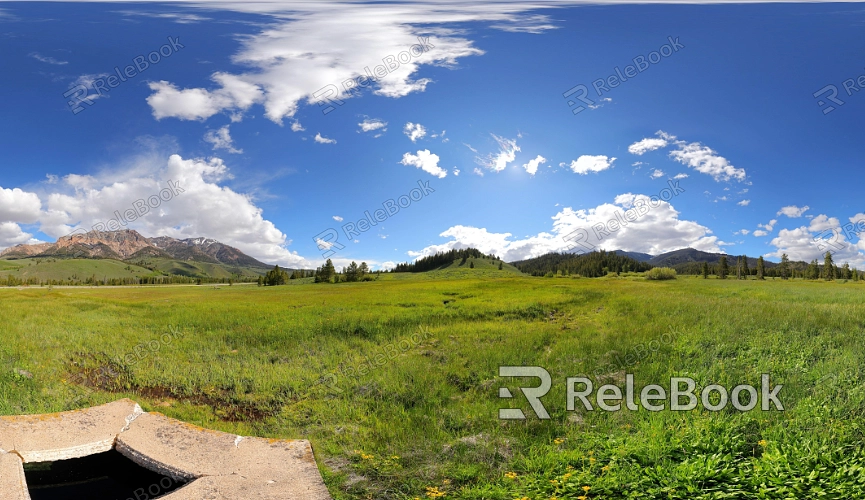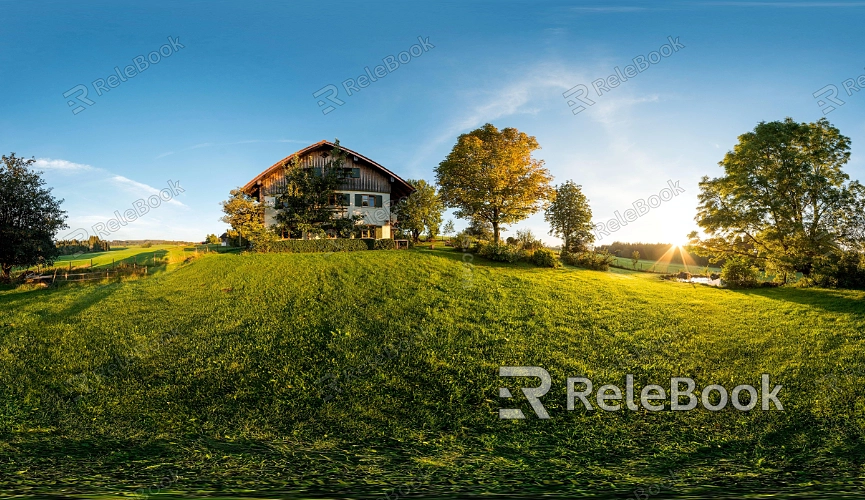How to Optimize Grass Texture HDR for Faster Rendering
In architectural visualization, game development, or animation production, the realism and lighting effects of grass are critical to creating an immersive environment. However, while high-resolution HDR textures can capture intricate lighting details, they can also significantly increase rendering times. This article explores how to adjust and optimize grass HDR textures to reduce rendering time while maintaining high visual quality. These strategies aim to help designers strike the perfect balance between performance and quality.

1. Choose the Appropriate HDR Resolution
The resolution of HDR files directly impacts both rendering speed and final visual output. While ultra-high-resolution textures capture more details, they also introduce a heavier computational load. Choosing the correct resolution for your scene can ensure the grass textures remain detailed without overburdening the rendering process.
Efficient Resolution Strategy: For distant views, lower-resolution HDR files can be used since minor details won’t significantly affect the overall visual outcome.
Close-up Optimization: In scenes where grass textures are showcased up close, higher-resolution HDRs can be selectively used to retain sharpness and detail in key areas.
2. Optimize the Lighting System
Lighting calculations consume a large portion of rendering time, especially when dealing with HDR lighting, which involves complex dynamic lighting shifts. By fine-tuning the lighting system, you can cut down rendering time without sacrificing visual fidelity.
Reduce Unnecessary Light Sources: In outdoor environments, HDR files may come with multiple light sources, but not all need to be active. Simplifying or turning off unnecessary lights can reduce the complexity of lighting calculations.
Segment Lighting Adjustments: For large grassy landscapes, you can divide the scene into zones and tweak lighting intensity and direction separately in each part to boost rendering efficiency.
3. Implement Caching Techniques
Caching can significantly reduce the need to recalculate lighting and reflections for each frame, particularly in animations or large-scale environments. This technique greatly accelerates the rendering process.
Lighting Cache: Generating a lighting cache ensures that HDR lighting doesn’t need to be recalculated every time, drastically reducing rendering time.
Reflection Cache: The reflective properties of grass can also be cached, allowing precomputed reflection data to be reused, speeding up the rendering workflow.
4. Simplify Reflection and Glossiness Settings
While reflection and glossiness parameters add realism to grass materials, overly complex settings can lead to longer render times. By simplifying these settings, you can decrease the computational load.
Lower Reflection Intensity: Grass typically has low reflectivity in natural environments. Reducing the reflection value aligns with realistic lighting while also cutting down on rendering calculations.
Control Glossiness: Keep the glossiness of grass materials on the lower end to avoid unnecessary high-gloss calculations, maintaining a natural look while enhancing rendering speed.

5. Adjust HDR Lighting Angle and Exposure
Sometimes the default angle and exposure of an HDR light may not suit the specific rendering requirements of your scene. Fine-tuning these settings can not only improve visual results but also reduce lighting calculation time.
Optimize Lighting Angle: Adjusting the angle of the HDR light can eliminate unnecessary highlights and create more natural shadows, contributing to faster rendering times.
Control Exposure: Lowering the exposure settings of the HDR file can reduce overly complex light and shadow variations, leading to more efficient rendering.
6. Use Low-Resolution Previews for Testing
Before committing to a final high-resolution render, designers can leverage low-resolution previews to test HDR lighting effects and grass texture performance. Previewing helps avoid unnecessary full-resolution renders, saving both time and effort.
Quick Scene Previews: Rendering a low-resolution version of the scene allows you to quickly assess the HDR lighting setup, ensuring that the light and shadow configuration is accurate before finalizing the render.
Step-by-Step Optimization: By previewing different sections of the grassy area, designers can incrementally adjust the lighting and material settings, avoiding the performance strain of rendering the entire scene at once.
7. Utilize Render Farms for Faster Processing
For large-scale grass scenes, render farms can be highly effective in speeding up the rendering process. Distributed computing allows complex HDR lighting and material calculations to be spread across multiple processors, significantly reducing rendering time.
Distributed Rendering: Assigning sections of the grass scene to a render farm allows parallel processing, speeding up the overall rendering, particularly in areas involving complex lighting and reflections.
Balancing Cost and Efficiency: When using a render farm, plan the budget accordingly to maximize efficiency while keeping costs under control, ensuring an optimal balance between speed and expense.
By selecting the appropriate HDR file resolution, optimizing the lighting system, and simplifying reflection parameters, designers can significantly improve the rendering speed of grass HDR textures. These methods not only reduce render times but also preserve the natural lighting effects of grass. If you're looking for more optimization tools or high-quality 3D model resources, Relebook offers a wide range of solutions to help you tackle complex rendering challenges effortlessly.

